By: Oliver Felisilda, RBC On-Campus Assistant Branch Manager & Advisor
Budgeting 101: How to Create a Budget
As a student, you likely have experienced many unexpected changes as a result of the current COVID-19 crisis. You’re doing a great job at adapting to the changes and forming new habits. Now, more than ever, is also the time to make sure that you are staying on top of managing your money – making smart financial decisions now will help you prepare for the future.
One of the ways you can do this is to develop the habit of paying attention to what’s happening to your money and where you want it to go. This article aims to help you understand what that means practically through a strategy that you may already be familiar with – budgeting.
All things related to money are very personal and really no two people’s budgets should or would look the same. So, as you are reading this, I recommend that you bring out something that you can use to document your entries. If done right, you’ll find that what you have created can give you a snapshot of your financial situation, how you feel about it, and adjustments you can make to reach your goals.
What is a Budget?
 A budget refers to the tool that helps you track and manage your money. While simple, its impact to your peace of mind cannot be overstated.
A budget refers to the tool that helps you track and manage your money. While simple, its impact to your peace of mind cannot be overstated.
It is common to find interruptions in one’s finances. Perhaps a new expense arises unexpectedly or maybe your income declines due to conflicting priorities or losing the time or ability to work. People that budget ultimately have less stress about money, because they have a handle on their financial situation and avoid overspending and managing debt. People that budget also have a better grasp on what they actually need vs. what they want, and can more easily prioritize and make smarter decisions about how to spend their money. Budgeting can really help you make the most of your money and get to your financial goals. Budgeting helps you to stay focused on what really matters in school – not money.
Step One: Income
A budget begins with listing your income. Whether it’s a one-time deposit (OSAP), a regular occurrence (pay check), or an unexpected surprise (birthday money) – money coming in is what you want to consider your ‘income’. The monthly totals of these incomes are going to make up the pool of money that you have access to do be able to spend. On this note, kindly list down all the sources of your income for the month.
So the money that comes into your account doesn’t always stay there – it goes out to pay for things you want, need, and things you think you need but you actually want. To avoid that “empty pockets” feeling, it’s important that you understand your ‘money that goes out’ – or the monthly expenses that you have so you can make sure you have enough income to cover it – and so you also can properly assess and prioritize the expenses that are essential and the ones that are more ‘nice to have’ but not vital.
Step Two: Expenses
So let’s think about what types of expenses that you have. These are the things that you are spending your money on regularly like that quick $2 tap every morning at Tim’s for coffee, or one time bigger ticket items like books you buy at the beginning of every semester, or the rent you pay every month. Take a look and for every item that you spend money on – write the item and the amount the spend column on your budgeting sheet.
Income and expenses are things that you can more or less plan ahead for and expect. Then there are the things that you might want to do with your money, like save for a local getaway, or for an iPhone, or have access to funds that you can spend going out with your friends. You need to be thinking about this stuff so when you start going through the budgeting exercise you’ll be able to see right away what you can afford to actually do.
Step Three: Goals
Take the time now to jot down some things that aren’t accounted for in your expenses or income that you’d like to be able to have money for – record it in the Goals column.
At this point you have a broad list of income, expenses, as well as ‘goals’ for your money. It’s necessary to organize these lists in a way that give you a simple and accurate snapshot of how much money you actually have. There’s so much fluctuation and change in expenses and income in a school year that if you just take an annual overview you won’t actually have a true sense of how much money you can spend each day to stay in control of your finances and feel confident when managing your money, so that you can achieve your goals.
The amount of money moving in and out of your account isn’t the only thing that matters. You also need to be aware of when money is moving in or out – so you can budget to have enough in your account to cover the expense. How often money is moving in or out is also important to make sure that the money you have coming in can actually last the entire school year.
You’re going to want to keep track of your budget on a monthly basis so you can plan for both your immediate needs and future needs.
Shortages: What If I Don’t Have Enough Income?
If your balance is negative it means you that income you’ve stated is not enough to cover the expenses you’ve listed. It also means you don’t have any money to contribute to your goals. First thing you’ll want to look at if you’re in this situation is your expenses by finding ways to trim down. You can do this by identifying the things you absolutely need to survive. In addition, it is possible that there are things that are non-essential and should be treated more like goals. For example, I have Starbucks on my goals section of my budget – it’s a treat for me, if I can afford it. But I can live without it. My rent, however, is an essential expense. I wouldn’t be able to survive if I didn’t pay for the roof over my head. Furthermore, reducing the costs of your expenses can go a long way. So you can try to find ways to shop smarter or save money.
On the flip side, the other thing you can try to do is find ways to get more money. But applying for scholarships, getting a job, or finding ways for your money to make you money are some things you can explore. RBC has some resources for jobs and scholarships, your campus will have resources as well. The government has relief programs to help support students. For some of you, asking your parents may be an option. For others, sitting down with a financial advisor might be helpful in finding other solutions that will help your financial situation.
Budgeting Tips
While everyone’s budget is different, the following tips are useful to everyone.
Primarily, budgets are often more effective with an emergency fund as a part of your goals. Allocating about 1% of your income into this fund that can be used for unplanned expenses as they come up can give you more peace of mind. Secondly, always having some type of savings goal gets you into the habit of setting something up and achieving it while putting your funds aside. Furthermore, if your budget balance is 0, it means you aren’t setting yourself up to either plan ahead or save for a goal. So, always be mindful of how your lifestyle is causing a surplus or a shortage.
It is also worth noting that making a budget doesn’t guarantee that you’ll stick to it. Life happens, sometimes you might go over budget or maybe you’ll find that you’re just tapping too much and in adversely increasing your expenses. If you find yourself in a situation where you aren’t staying in your budget – don’t just give up. Every day is a new opportunity to course correct.
One of the ways you can ensure consistency is by ensuring that the budgeting tool that you use is fit for you. There are many apps, tools, and budgeting calculators online that can give you an updated budget in real time.
In addition, alerts are a great way to get proactive and reactive information about your bank account in real time. You can set up alerts through online or mobile banking to get a text every time you tap, to reminder you about an upcoming bill, to see your balance at the end of every day, or to see your balance if it dips a little too low.
If you’re an RBC customer you get access to something called NOMI insights in mobile banking. This is our artificial intelligence tool that analyzes your account activity to give you insights about where your money is going and smarter ways to manage it.
You can also ask for help from your advisor at your financial institution. Your advisor can offer support to make sure you are using the right account, plan for any upcoming changes to your budget or adjust for unplanned changes, minimize unnecessary fees, and ultimately do what they can to keep you on track to achieving your goals.
For any additional questions or concerns about this article, please let us know! We are happy to help you with your journey so please reach out to Oliver or Bruno at the RDC on campus location near the forum or via email at [email protected] or [email protected].
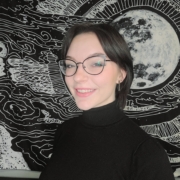 pleasure of serving as your SARDP President over the 2021/2022 academic year – and what a year it’s been! Right out of the gate, going live to announce the transition from RDC to RDP; Joining the Red Deer Polytechnic Board of Governors and being the first student appointed to a Presidential Search Committee; Continuing the fight for degrees…
pleasure of serving as your SARDP President over the 2021/2022 academic year – and what a year it’s been! Right out of the gate, going live to announce the transition from RDC to RDP; Joining the Red Deer Polytechnic Board of Governors and being the first student appointed to a Presidential Search Committee; Continuing the fight for degrees…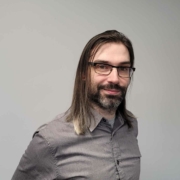 I would like to acknowledge that the Students Association operates on Treaty 7, Treaty 6, and Métis ancestral lands, which are home to many Indigenous peoples. I have been a part of the RDP community for a number of years, and have had four different majors during that time, proving that you don’t need to have a clear and defined path as soon as you enter…
I would like to acknowledge that the Students Association operates on Treaty 7, Treaty 6, and Métis ancestral lands, which are home to many Indigenous peoples. I have been a part of the RDP community for a number of years, and have had four different majors during that time, proving that you don’t need to have a clear and defined path as soon as you enter…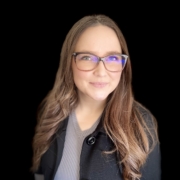 students to support their educational success as the Vice President External!
students to support their educational success as the Vice President External!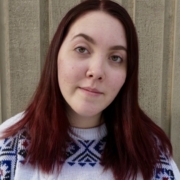 Hello there! My name is Felicity Arndt, and I am in my first year of the elementary education degree. I’ve been in the Student Council for one year and I would love to continue to facilitate change and be a face for students around the school. I try to involve myself…
Hello there! My name is Felicity Arndt, and I am in my first year of the elementary education degree. I’ve been in the Student Council for one year and I would love to continue to facilitate change and be a face for students around the school. I try to involve myself…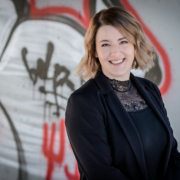 My name is Erin Bast; I am a wife and a mother of 3, all under ten years old. I was born in Red Deer and raised in a small town called Elnora. I graduated from Delburne Centralized High School in 1999, which officially makes me old.
My name is Erin Bast; I am a wife and a mother of 3, all under ten years old. I was born in Red Deer and raised in a small town called Elnora. I graduated from Delburne Centralized High School in 1999, which officially makes me old.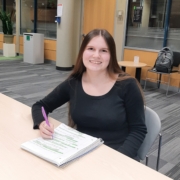 through the University of Calgary collaborative program at Red Deer Polytechnic. She is currently in her 1st year of Justice Studies at RPD and plans to complete a PhD in Forensic Psychology. She has been an active councilor on the Student Association Student Council since 2019…
through the University of Calgary collaborative program at Red Deer Polytechnic. She is currently in her 1st year of Justice Studies at RPD and plans to complete a PhD in Forensic Psychology. She has been an active councilor on the Student Association Student Council since 2019…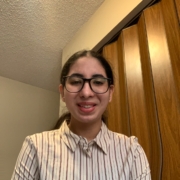 Hello! My name is Lovejeet Kaur, an international student pursuing Business Administration at Red Deer Polytechnic. Being a Commerce student, I have a passion for accounting and management, and I have planned to build my Carrer in Human Resource because I know I want a job that allows me to be around people and provides a chance to change their lives in a better way. Moreover, Human Resource…
Hello! My name is Lovejeet Kaur, an international student pursuing Business Administration at Red Deer Polytechnic. Being a Commerce student, I have a passion for accounting and management, and I have planned to build my Carrer in Human Resource because I know I want a job that allows me to be around people and provides a chance to change their lives in a better way. Moreover, Human Resource…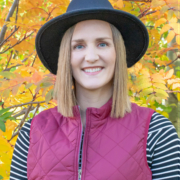 mentally healthy and happy balance”; that is Larissa’s platform during this election.
mentally healthy and happy balance”; that is Larissa’s platform during this election.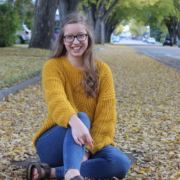 and I’m currently a 3rd year Business Administration student focusing on Accounting. I started here way back in 2017 when it was still RDC, and business was at the DSB downtown campus. In Fall 2021, I joined the student council and have loved being involved with decisions that impact every student!…
and I’m currently a 3rd year Business Administration student focusing on Accounting. I started here way back in 2017 when it was still RDC, and business was at the DSB downtown campus. In Fall 2021, I joined the student council and have loved being involved with decisions that impact every student!…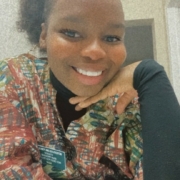 Hello! My name is Motesolaoluwa Yomi-Dada. I prefer to go by Tessie. I am running for the position of Council 2022/2023. I am a first year in the Practical Nursing Program. I have spent the last year working in RDP Residence as a Resident Attendant and I also volunteer on RDP International’ s mentorship program. I want to serve you…
Hello! My name is Motesolaoluwa Yomi-Dada. I prefer to go by Tessie. I am running for the position of Council 2022/2023. I am a first year in the Practical Nursing Program. I have spent the last year working in RDP Residence as a Resident Attendant and I also volunteer on RDP International’ s mentorship program. I want to serve you…
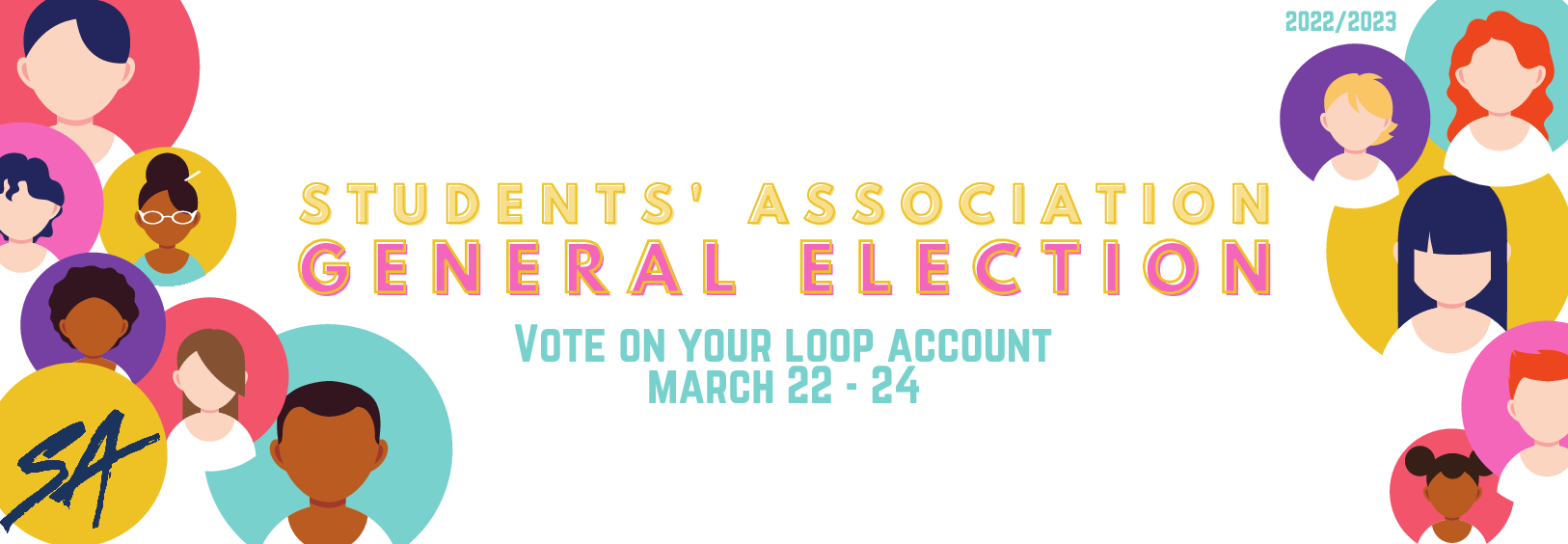
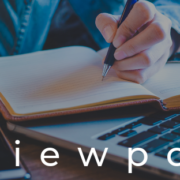
 A budget refers to the tool that helps you track and manage your money. While simple, its impact to your peace of mind cannot be overstated.
A budget refers to the tool that helps you track and manage your money. While simple, its impact to your peace of mind cannot be overstated.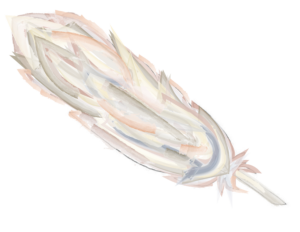



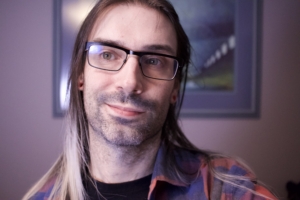 I would like to acknowledge that the Students Association operates on Treaty 7, Treaty 6, and Métis ancestral lands, which are home to many Indigenous peoples. I have been a part of the RDP community for a number of years, and have had four different majors during that time, proving that you don’t need to have a clear and defined path as soon as you enter post-secondary schooling. I’m in my 4th year of my BA Psychology program through the University of Calgary. One of the main advantages that I can offer to students is that by being a long term student at RDP I have a great understanding of what resources, opportunities, and programs are available to student members, in addition to the struggles that they face as part of their education. This means that a large part of what I will be doing at the Students Association will be to help advocate for student’s mental health resources and letting students know that there are various learning supports available to them. While making sure to advocate for the Polytechnic students’ voice in the province and nationally. Over the past few years you might have found me helping students in the library as a peer tutor at the Writing Skills Centre, visiting classrooms and helping organize the Agora Undergraduate Conference, editing papers for the Agora Journal, and being the student voice on the School Council. If you see me on campus I’m more than willing to stop and chat, especially if it ends up being an issue that affects your education.
I would like to acknowledge that the Students Association operates on Treaty 7, Treaty 6, and Métis ancestral lands, which are home to many Indigenous peoples. I have been a part of the RDP community for a number of years, and have had four different majors during that time, proving that you don’t need to have a clear and defined path as soon as you enter post-secondary schooling. I’m in my 4th year of my BA Psychology program through the University of Calgary. One of the main advantages that I can offer to students is that by being a long term student at RDP I have a great understanding of what resources, opportunities, and programs are available to student members, in addition to the struggles that they face as part of their education. This means that a large part of what I will be doing at the Students Association will be to help advocate for student’s mental health resources and letting students know that there are various learning supports available to them. While making sure to advocate for the Polytechnic students’ voice in the province and nationally. Over the past few years you might have found me helping students in the library as a peer tutor at the Writing Skills Centre, visiting classrooms and helping organize the Agora Undergraduate Conference, editing papers for the Agora Journal, and being the student voice on the School Council. If you see me on campus I’m more than willing to stop and chat, especially if it ends up being an issue that affects your education. I’m sure you’re wondering how this could be life changing…well it’s because you are joining a group with other students who have similar interests and values as you. You will spend an abundance of time with these individuals and will create lifelong bonds. You and these other students will share a unique experience, and no one can take that away from you. Aside from friendships, being a member or Executive of a student group will help develop your leadership skills, expand your resume, and provide many networking opportunities. As far as I can tell, there are no negative aspects of joining a student group!!
I’m sure you’re wondering how this could be life changing…well it’s because you are joining a group with other students who have similar interests and values as you. You will spend an abundance of time with these individuals and will create lifelong bonds. You and these other students will share a unique experience, and no one can take that away from you. Aside from friendships, being a member or Executive of a student group will help develop your leadership skills, expand your resume, and provide many networking opportunities. As far as I can tell, there are no negative aspects of joining a student group!!
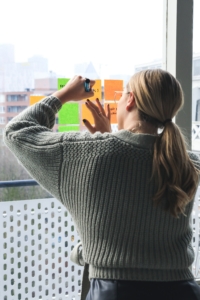

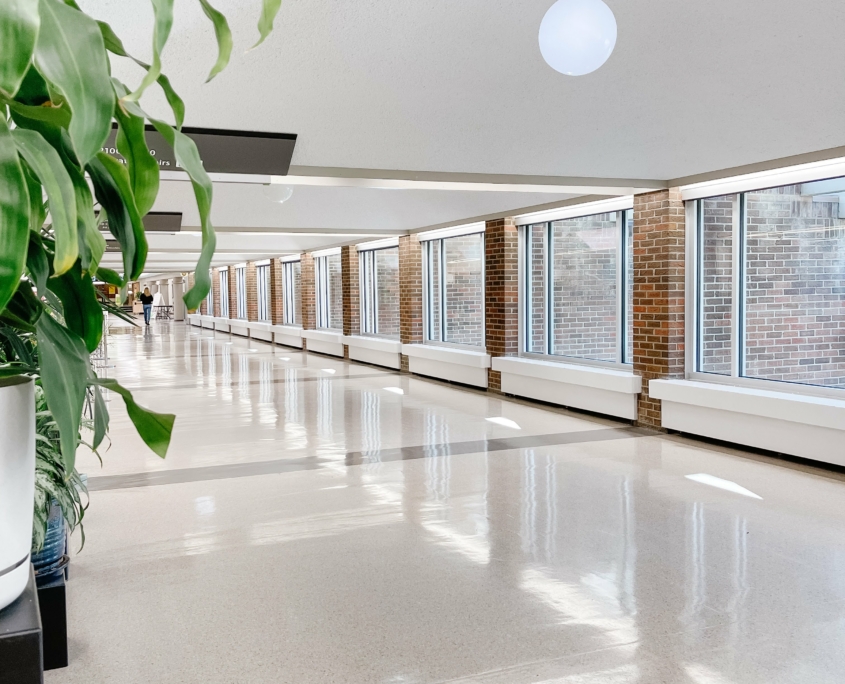
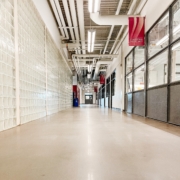
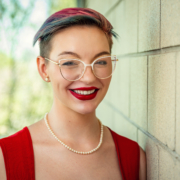
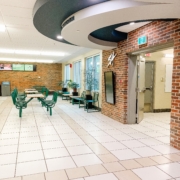
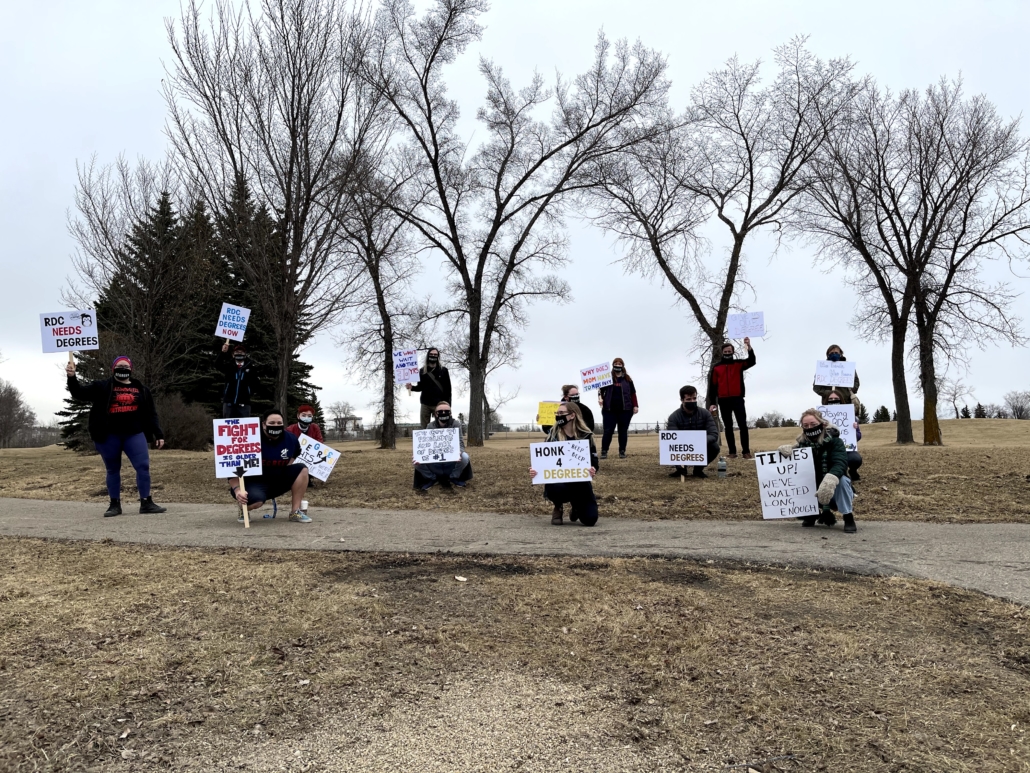
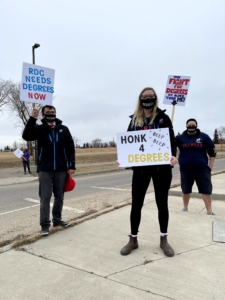
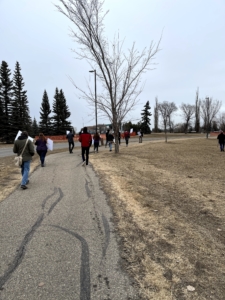
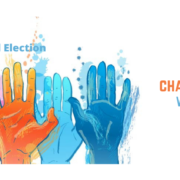

 Hi, my name is Logan Garbanewski, but I like to go by Logan Beauchamp. I am running for the position of Vice-President External because I want to represent you and all your needs and interests in a productive and thorough manner to all external organizations and government bodies.
Hi, my name is Logan Garbanewski, but I like to go by Logan Beauchamp. I am running for the position of Vice-President External because I want to represent you and all your needs and interests in a productive and thorough manner to all external organizations and government bodies.  Thank you so much for taking the time to ‘meet’ me. I’m Kareen Lambert, and I am running for the position of Vice President External (VPX). This is my first year attending Red Deer College in the Social Work Diploma program. I was drawn to social work, and to Red Deer College, through my extensive work and volunteering in diversity, inclusion, and advocacy. I have been involved with a wide variety of community organizations and coalitions in Red Deer, collaborating with and advocating to all levels of government in various capacities. Some of the highlights of my community involvement have been with the Red Feather Women, the Central Alberta Poverty Reduction Alliance, the Red Deer Welcoming & Inclusive Community Network, the Trans & Nonbinary Aid Society, the Central Alberta Pride Society, the Red Deer Local Immigration Partnership, and the Lifelong Learning Council of Red Deer. My personal life, my career life, and my student life are all proudly centred around ensuring people are as supported as possible. Taking on the role of VPX would be no different; support, care, and connectedness are always at the core of what I do.
Thank you so much for taking the time to ‘meet’ me. I’m Kareen Lambert, and I am running for the position of Vice President External (VPX). This is my first year attending Red Deer College in the Social Work Diploma program. I was drawn to social work, and to Red Deer College, through my extensive work and volunteering in diversity, inclusion, and advocacy. I have been involved with a wide variety of community organizations and coalitions in Red Deer, collaborating with and advocating to all levels of government in various capacities. Some of the highlights of my community involvement have been with the Red Feather Women, the Central Alberta Poverty Reduction Alliance, the Red Deer Welcoming & Inclusive Community Network, the Trans & Nonbinary Aid Society, the Central Alberta Pride Society, the Red Deer Local Immigration Partnership, and the Lifelong Learning Council of Red Deer. My personal life, my career life, and my student life are all proudly centred around ensuring people are as supported as possible. Taking on the role of VPX would be no different; support, care, and connectedness are always at the core of what I do.  Tansi! I am Shannon Humphrey; it has been an honour to serve as your Vice President Academic (VPA) for the past year. I am seeking re-election for a second term serving in this vital role. I am in the second year of my Justice Studies Diploma and hold a Bachelor of Business Administration. I am a lifelong learner honing my passion for advocacy. In my eight years at RDC, I’ve been involved in numerous advocacy efforts, both on campus and in the community. I believe it is extremely important to have a strong student voice in the room at every level of decision-making throughout Red Deer College (RDC) to ensure students are heard and your best interests are upheld. I want to continue to be that voice for the students and continue to represent you on multiple committees and working groups throughout the college.
Tansi! I am Shannon Humphrey; it has been an honour to serve as your Vice President Academic (VPA) for the past year. I am seeking re-election for a second term serving in this vital role. I am in the second year of my Justice Studies Diploma and hold a Bachelor of Business Administration. I am a lifelong learner honing my passion for advocacy. In my eight years at RDC, I’ve been involved in numerous advocacy efforts, both on campus and in the community. I believe it is extremely important to have a strong student voice in the room at every level of decision-making throughout Red Deer College (RDC) to ensure students are heard and your best interests are upheld. I want to continue to be that voice for the students and continue to represent you on multiple committees and working groups throughout the college. 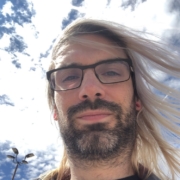 Brenan has been a part of the RDC community for a number of years, and has had four different majors in that time, proving that you don’t need to have a clear and defined path as soon as you enter post-secondary schooling. Brenan is in their 4th year of their BA Psychology program through the collaborative with the University of Calgary. One of the main advantages that Brenan can offer to students is that by being a long term student at RDC they have a greater understanding of what resources, opportunities, and programs are available to student members, in addition to the struggles that they face as part of their education.
Brenan has been a part of the RDC community for a number of years, and has had four different majors in that time, proving that you don’t need to have a clear and defined path as soon as you enter post-secondary schooling. Brenan is in their 4th year of their BA Psychology program through the collaborative with the University of Calgary. One of the main advantages that Brenan can offer to students is that by being a long term student at RDC they have a greater understanding of what resources, opportunities, and programs are available to student members, in addition to the struggles that they face as part of their education. Hi there! My name is Brittney, and I am a third-year student studying in Occupational and Physical Therapist Assistant! When I am not on campus, you may find me participating in activities or clubs either on-campus or off-campus. I have a strong passion for being an advocate for the deaf or hard of hearing community and disabilities! It is not just that I advocate for; I also support mental health, background, gender, and sexuality. It will be my third term running for the student council. I do believe I have so many experiences of being such a strong advocate.
Hi there! My name is Brittney, and I am a third-year student studying in Occupational and Physical Therapist Assistant! When I am not on campus, you may find me participating in activities or clubs either on-campus or off-campus. I have a strong passion for being an advocate for the deaf or hard of hearing community and disabilities! It is not just that I advocate for; I also support mental health, background, gender, and sexuality. It will be my third term running for the student council. I do believe I have so many experiences of being such a strong advocate.